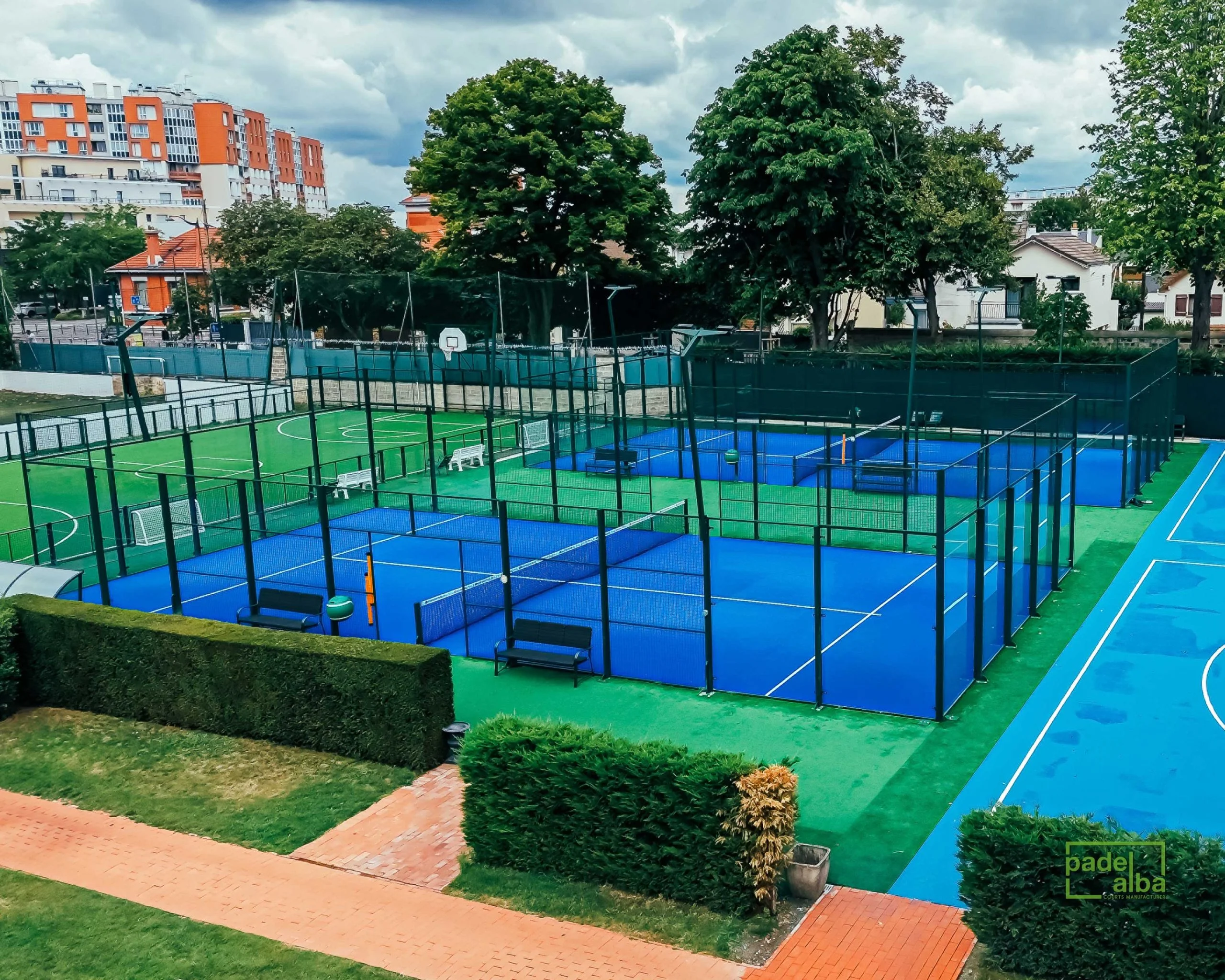Padel tennis, a sport that has rapidly gained popularity around the world, owes much of its appeal to its dynamic gameplay and accessibility. Central to the sport’s evolution is the construction of high-quality padel courts, where players engage in exciting rallies within defined boundaries. Among the key components of a padel court, the materials used play a key role in ensuring durability, safety and optimal playing conditions. In this comprehensive exploration we delve into the intricate world of padel court construction, focusing especially on the materials used, with special emphasis on the construction of glass-walled courts.
Understanding the construction of padel tennis courts:
In essence, a padel tennis court consists of a playing surface enclosed by walls, typically 10 meters wide and 20 meters long. Unlike traditional tennis courts, padel courts feature transparent walls, usually made of glass, allowing spectators and players to watch the action from multiple angles.
The choice of materials for the construction of a padel tennis court is guided by several factors, including durability, safety, aesthetics and performance. Here, we analyze each component to understand the role of materials in achieving these goals.
1. Floors:
The playing surface of a padel tennis court is usually constructed of artificial turf or synthetic turf. This choice of material offers several advantages, including uniform ball bounce, low maintenance requirements and increased player comfort. Advanced synthetic turf systems incorporate shock-absorbing properties, reducing the risk of player injury and ensuring a consistent playing experience in different weather conditions.
2. Walls:
The walls of a padel tennis court serve both a functional and aesthetic function. Traditionally, these walls were made of concrete or masonry, which provided structural integrity and support. However, modern padel tennis courts often have transparent walls made of tempered glass. Tempered glass offers exceptional clarity, allowing unobstructed views of play while maintaining structural strength and safety.
3. Support structures:
The supporting structures of a padel tennis court, including the frame and posts, are typically made of steel or aluminum. These materials provide strength and stability while withstanding the rigors of frequent use and exposure to the elements. The frame and posts are meticulously designed to ensure proper alignment and support of the glass walls, contributing to the overall integrity of the court structure.
4. Lighting:
Proper lighting is essential to facilitate play and ensure player safety, especially on indoor padel tennis courts. High-quality LED lighting systems are commonly used to illuminate the playing area, providing uniform brightness and minimizing glare. LED lights offer energy efficiency, longevity and superior performance, enhancing the playing experience for both participants and spectators.
5. Accessories and Finishes:
Various accessories and finishes are incorporated into the design of padel tennis courts to enhance functionality and aesthetics. These may include fencing, netting, signage, seating arrangements and landscaping elements. The choice of materials for these components varies depending on factors such as budget, design preferences and maintenance requirements.
Conclusion:
In the dynamic world of padel court construction, material selection plays a crucial role in determining the quality, safety and performance of the playing environment. From resilient flooring to transparent glass walls, each component is carefully designed to meet the demands of the sport and enhance the overall experience for players and spectators alike. As padel tennis continues to captivate enthusiasts around the world, advances in material science and construction techniques will undoubtedly shape the future of padel tennis court design, ushering in an era of innovation and excellence.



